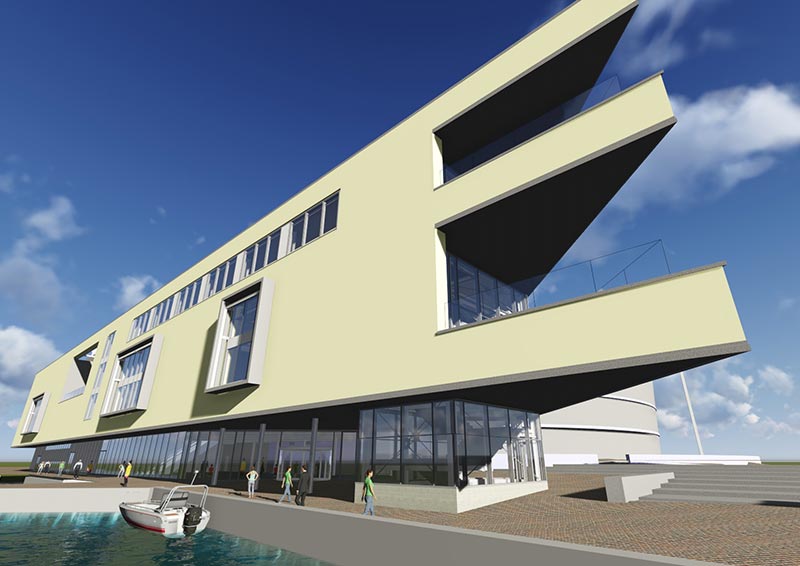Why BIM will carry on booming
Contents |
[edit] Introduction
The second decade of the 21st century will be recorded in the evolution of the built environment as ‘the BIM era’.
Digital innovation has previously swept through the industry, transforming the drawing board into a CAD station and the calculation pad into dynamic spreadsheets. We have recently witnessed the establishment of the modelling suite as the forefront method of developing and communicating built environment design, with the intention that design data will continue as an important resource to facilities long after the construction of an asset or facility has completed.
The foremost benefit of modern modelling software to employers and designers is the ability to better co-ordinate and present 3D visual models of designs. There is an opportunity for designers to develop the design briefs.
A limited or restricted design brief is often cited as the root cause of design failings that are not identified until after the handover of a completed project. Through presenting and interrogating a model with the employer, end users and facility maintenance providers, the opportunity to optimise designs should be vastly increased in comparison to a design review of 2D drawings. These are traditionally prepared for pricing and construction purposes and do not present a multi-disciplinary coordinated image of the completed works.
[edit] Built environment digital innovation a huge market
To fully implement such a benefit presents the first challenge to professional service providers. The creation and development of any 3D model will invariably require increased input and resource to achieve a suitably developed model. There is therefore a requirement for employers to invest more in design services, with the aim of achieving a user-friendly, high quality and cost efficient end product, constructed with minimal change and defects. This can only be achieved through the industry-wide education of clients on the benefits of such an approach to design.
Built environment digital innovation has been a huge success for the IT industry, which has established the construction industry as a major market place.
Construction professionals must now evolve as roles such as the BIM manager will be established within blue chip companies. There is significant opportunity for built environment professionals to establish services beyond their current specialisms that may include hosting and maintenance of in-service facility BIM models, production of BIM compliant survey data, assessment of existing facility performance through models and efficient redevelopment of existing modelled facilities for alternative usage.
Provision of such services would enable the industry to maintain an ‘in service’ connection to facilities which will aid in the establishment of current digital innovation in the industry and also the development of future BIM modelling.
Current procurement rules in relation to appointment of suppliers and product specifications also pose significant challenges to implementation of BIM processes. In order to introduce time efficiencies in the development of a design model, designers will likely opt to include BIM family objects, for material and equipment items, which have been prepared by product manufacturers.
[edit] Government needs to invest
Any such BIM family items will likely have been developed on behalf of a major manufacturer who has invested in the creation of a BIM family to better promote their products. Such an approach is however in conflict with current public procurement guidelines which will not allow a specific product or supplier to be named.
A developed library of generic materials, plant and equipment is required in line with procurement policy. Such a process would require significant resource to establish and it’s unlikely that many employers, let alone designers, will commit to developing a library of items on a job-by-job basis. There is therefore an onus on government to invest in such a process so as to facilitate the implementation of BIM.
Perhaps the most significant challenge will be in relation to the role of young engineers starting out in a software-rich industry.
At present modelling software is used by both engineers and technical staff and the capabilities of design programmes are constantly evolving. We must be aware that the engineering principles and standards on which we establish our designs remain largely unchanged from the designs which were communicated successfully through the medium of hand drawn plans, as recent as 25 years ago.
The role of the engineer should remain largely unchanged by digital innovation – to interrogate data, implement standards and best practice and provide surety and integrity within design. But there is clearly a new opportunity for technical staff within the industry as modellers to assist and maintain the role of the engineer.
This article was originally published here by ICE on 27 Jan 2017. It was written by Michael Murray.
--The Institution of Civil Engineers
[edit] Related articles on Designing Buildings Wiki
BIM Directory
[edit] Building Information Modelling (BIM)
[edit] Information Requirements
Employer's Information Requirements (EIR)
Organisational Information Requirements (OIR)
Asset Information Requirements (AIR)
[edit] Information Models
Project Information Model (PIM)
[edit] Collaborative Practices
Industry Foundation Classes (IFC)







